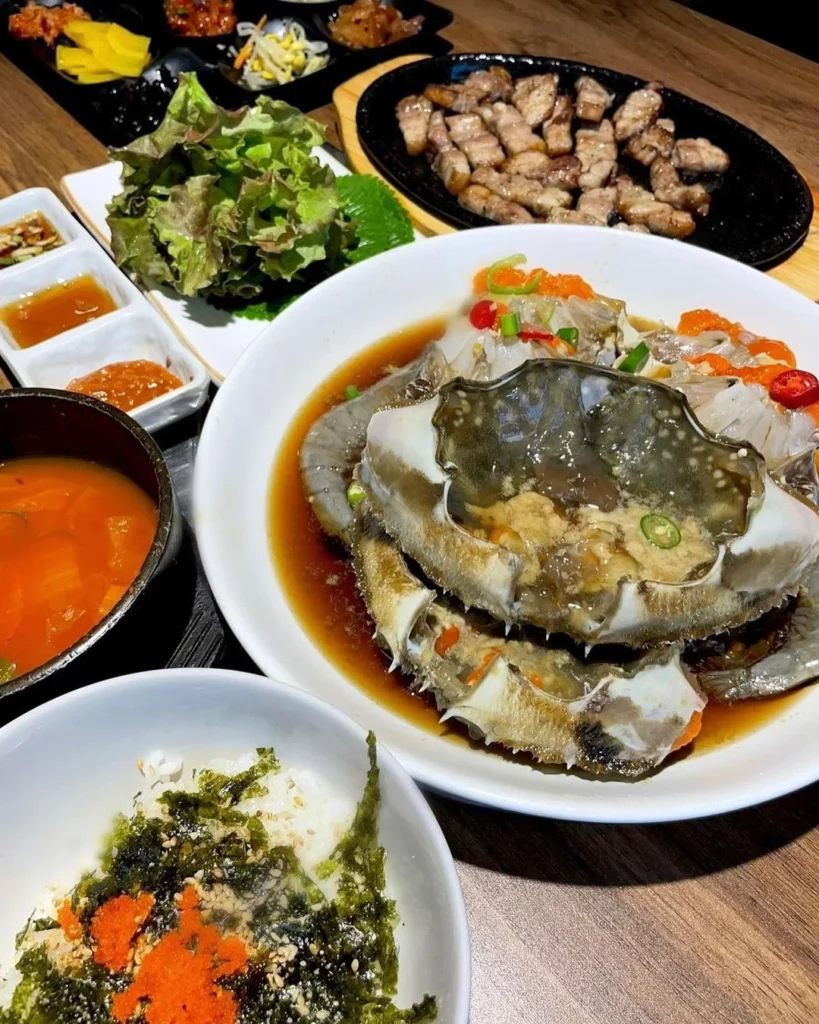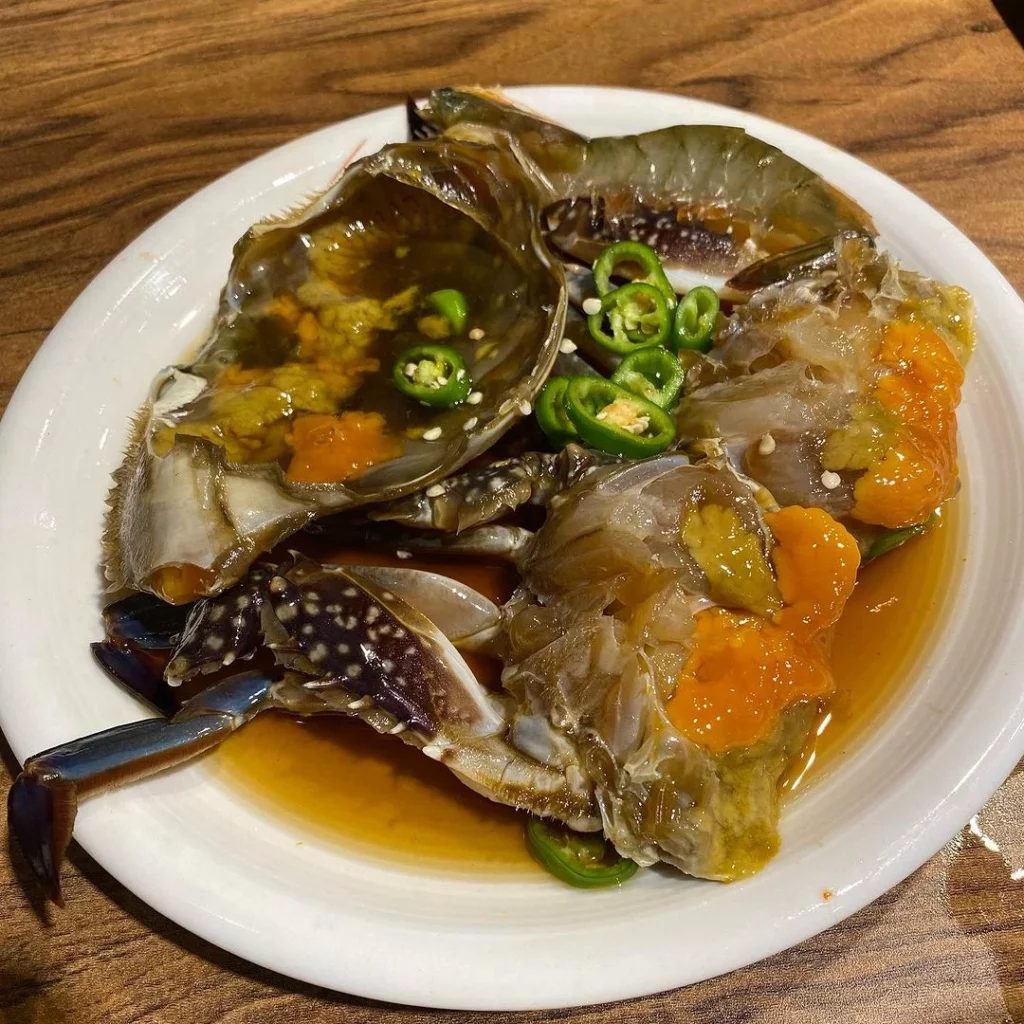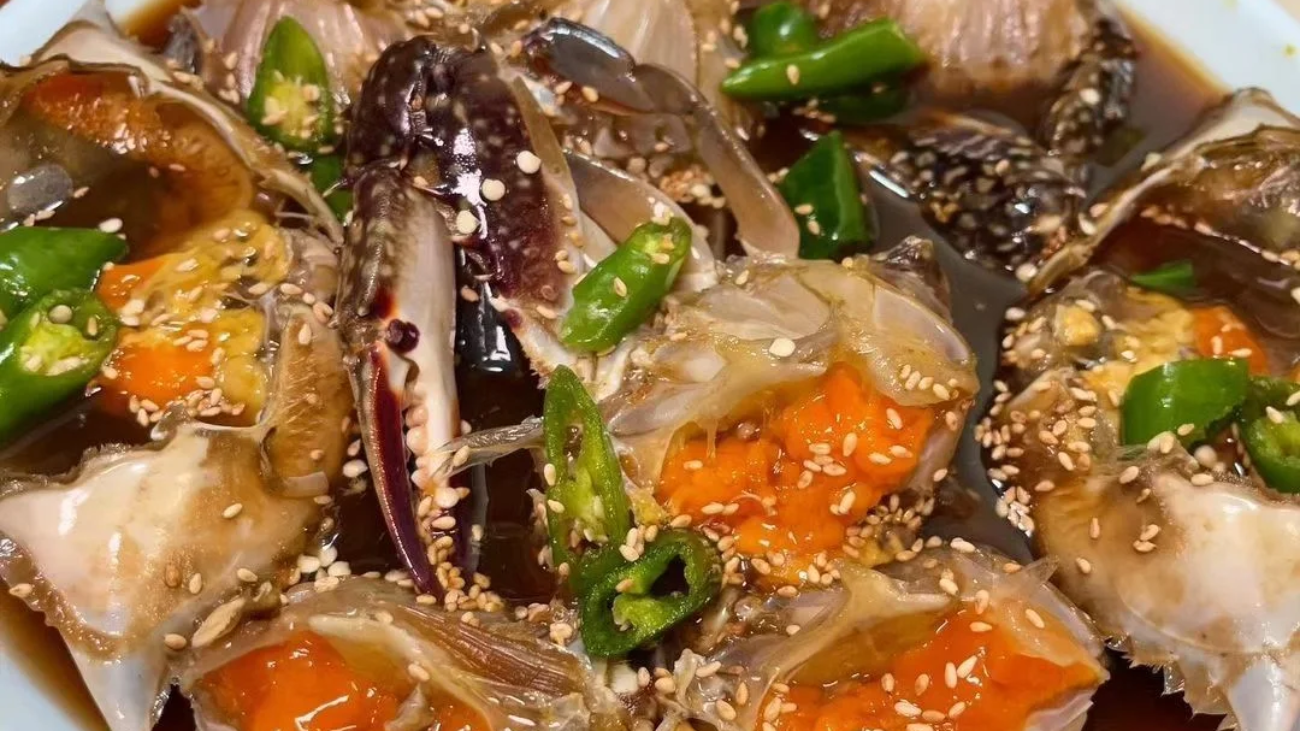Recently, social media saw a culinary craze that captivated foodies globe. This culinary buzz was about “Ganjang Gejang.” The food is a beloved South Korean dish. It’s not only a tasty treat, but a popular street snack in South Korea.
Ganjang Gejang Unveiling
What is Ganjang Gejang? Raw crab is the basis of the food. Soy sauce or ganjang ferments this particular ingredient before it is eaten. South Korean fermented foods, called “jeotgal,” are made from shellfish.
A History of Ganjang Gejang

Ganjang Gejang tastes well with rice and nori, which is typical of jeotgal-based foods. This dish is called “Gejang” because “Ge” means crab and “Jang” means sauce or flavour.
Gejang is traditionally made by marinating fresh crab in soy sauce. Some adventurous eaters choose live crabs in “Ganjang Gejang.” The spicier “Yangnyeom Gejang” immerses fresh crabs in chilli powder.
These food was originally made from the chamge crab, or Chinese Mitten Crab. However, when chamge crab populations dwindled, South Koreans sought alternatives. This search led them to try horse and Asian paddle crabs.
Ganjang Gejang’s main flavour is a delightful umami. Its beauty is enhance with crab roe and mustard, creating a gourmet symphony. Ganjang Gejang made with chamge crabs smells stronger.
Due to its thick shell, chamge crab requires months of fermenting to get its best flavour. Crabs must be fresh and high-quality to be great.
Ganjang Gejang with saltwater crabs is sweeter and tangier. These crabs are bigger and have heavier flesh. Additionally, crab preparation takes just a week.
The marinating sauce usually covers the crab’s shell and claws. The crab must be well clean before this stage. The crab then receives a generous amount of boiling soy sauce. These food is boiled three times before being ready for ingestion.
According to Gyuhap Chongseo, fermented fish dishes like Gejang date back to the 17th century. Gejang was a culinary gem during the Joseon Dynasty. As a banchan, it was a side dish at royal feasts for generations.
South Korea’s Respect for Ganjang Gejang
In South Korea, Ganjang Gejang is the best food. This famous dish is serve at several restaurants, including Gunsook Jung’s Honglim Banchan. In South Korea’s busy Gwangjang Market, Honglim Banchan’s cuisine was featured on Netflix’s “Street Food Asia.”
Gunsook Jung’s grandma founded her restaurant in 1952, a touching story. In the chaotic aftermath of battle, food became the first concern. Without refrigeration, food preserved by fermentation.
Her grandmother’s jeotgal-based meals were so popular that they continued serving these food for generations.
Ganjang Gejang’s Widespread

One could ask whether a vacation to South Korea is necessary to sample Ganjang Gejang, a gastronomic craze in South Korea. Interestingly, numerous Jakarta eateries provide the food. This delicious meal is usually serve in real Korean eateries.
Namo Korean Seafood BBQ is one. In addition to seafood BBQ, tourists may enjoy the food. Namo offers both the original and Yangnyeom Gejang versions.
Interestingly, these food may be enjoy at home. How? By ordering a Kimchi Heaven marinated crab box. This service offers fresh, plump crabs with roe. Furthermore, these crabs have been carefully clean and prepare for eating to maintain freshness and flavour.
Halo Seoul is a notable the food eating hotspot. These food at Halo Seoul has preserved its culinary skill while modernising the flavours. Among Korean cuisine places, Halo Seoul is well-known.
The Allure of Ganjang Gejang
Its unique flavour attracts many to Ganjang Gejang. These food, despite its rawness, does not smell fishy. Instead, delicate crab flesh and crab roe highlight its complex flavour.
Despite the gastronomic joys and savoury sensations, halal compatibility may arise. Indonesia’s Islamic affairs authority, LPPOM MUI, has clarified this. These food is halal if not coupled with non-halal flavours or components. This halal status comes from the crab, the main component.
The Mysterious “Bapdoduk”
When researching Ganjang Gejang, one gets the odd moniker “bapdoduk.” Laughably translated, it means “rice thief.” This name is a compliment to the dish’s allure. Moreover, these food is irresistible with rice, producing an everlasting circle of gastronomic pleasure.
In conclusion
Ganjang Gejang represents South Korean cuisine. Its transformation from raw crab to a savoury, umami-rich delicacy via fermentation exemplifies Korean culinary prowess. These food represents South Korea’s rich past and appeals to foodies worldwide beyond its flavour. And then, Ganjang Gejang welcomes you to a memorable gastronomic journey in a crowded South Korean market or at home.
